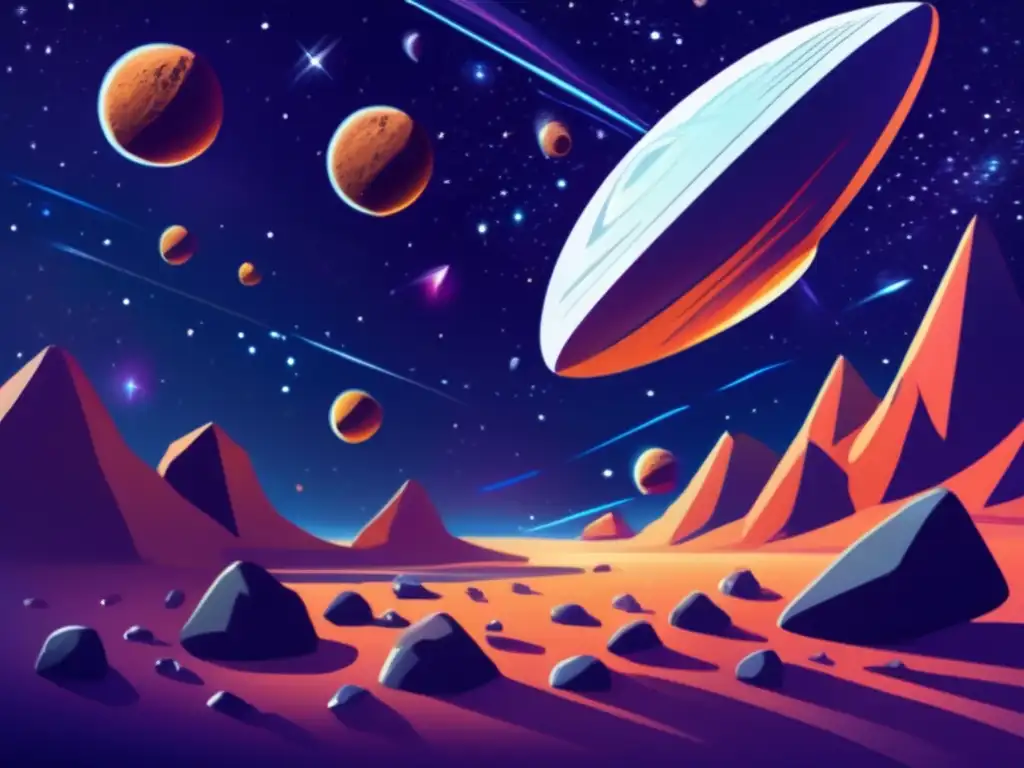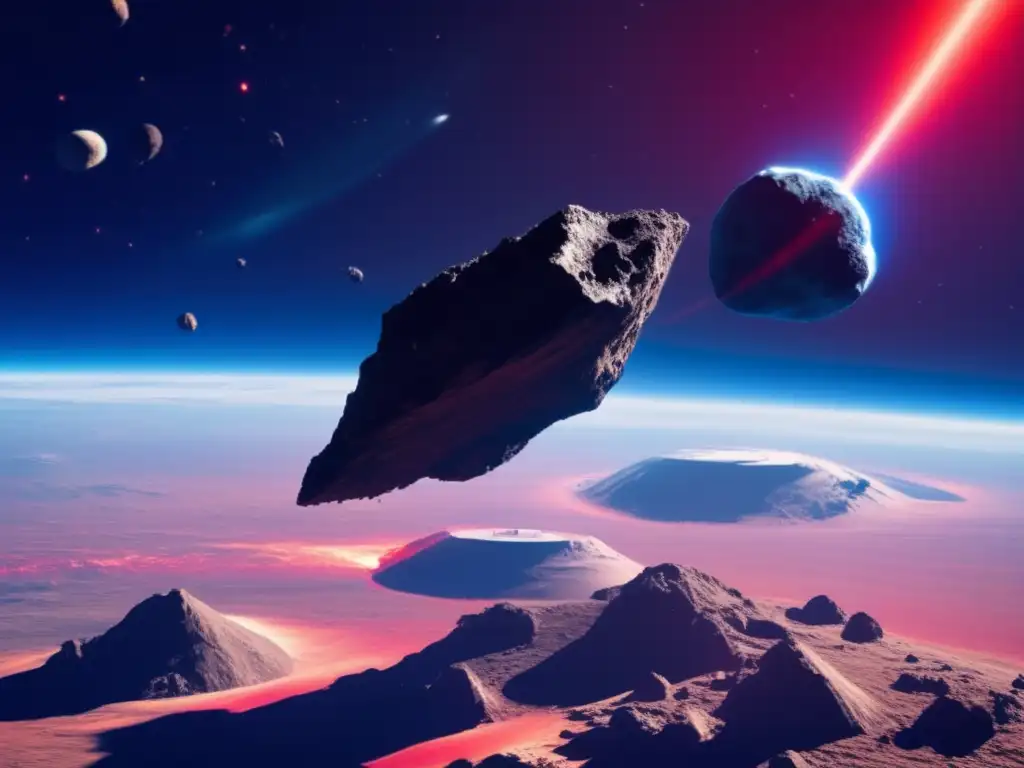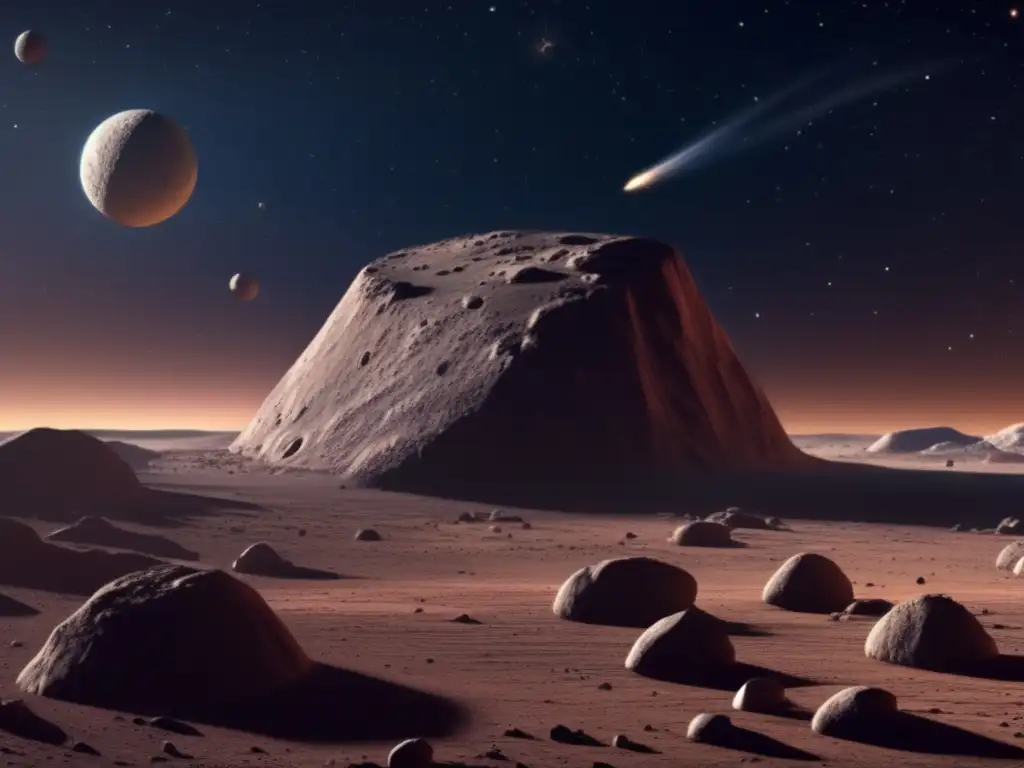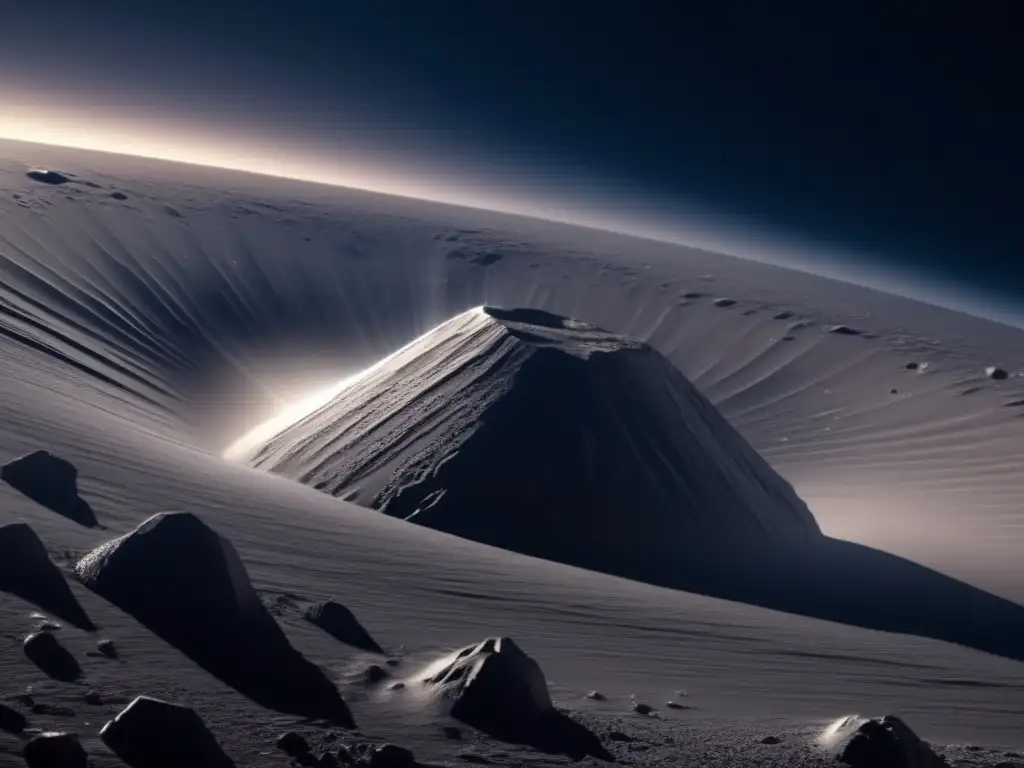What Makes Asteroid Themis Unique?

Introduction
Asteroids are fascinating celestial objects that hold a wealth of information about the history and composition of our solar system. Each asteroid has its own unique characteristics and features, and studying them allows us to uncover valuable insights into the origins and evolution of our universe. In this article, we will explore the asteroid Themis and discover what makes it truly special.
Discovery and Physical Characteristics

Discovery
Asteroid Themis was discovered on April 5, 1853, by astronomer Annibale de Gasparis at the Astronomical Observatory of Capodimonte in Naples, Italy. It was named after Themis, the ancient Greek goddess of divine law and order.
Physical Characteristics
Themis belongs to the Themis family of asteroids, which is a group of asteroids sharing similar orbital characteristics and believed to have originated from the same parent body. It has an approximate diameter of 197 kilometers (122 miles) and rotates on its axis once every 8.17 hours. It orbits the Sun in the main asteroid belt between Mars and Jupiter.
Composition and Spectral Classification
Studies have revealed that Themis has a composition primarily consisting of carbonaceous chondrite, a type of meteorite known for its high carbon content and primitive composition. Its spectral classification falls under the C-type category, indicating a carbon-rich surface.
Orbital Dynamics and Family

Orbital Dynamics
Themis follows an elliptical orbit around the Sun with a semi-major axis of approximately 3.13 astronomical units (AU). Its orbital eccentricity is 0.123, meaning its path deviates slightly from a perfect circle.
Themis Family
As mentioned earlier, Themis belongs to the Themis family of asteroids. This family is characterized by their similar orbital properties, including semi-major axis, eccentricity, and inclination. It is believed that the Themis family formed from a large parent body that underwent a catastrophic collision, resulting in the creation of numerous smaller asteroids with similar characteristics.
Surface Features and Exploration

Surface Features
While direct observations of Themis are limited, we can infer some of its surface features based on its spectral data and similarities with other carbonaceous asteroids. It is likely to have a heavily cratered surface, indicating a long history of impacts from other celestial bodies. Additionally, it may contain regolith, a layer of loose rock fragments and dust, as well as possible organic molecules.
Exploration
As of now, there have been no dedicated missions to explore Asteroid Themis. However, advancements in space exploration technology may allow for future missions to study this intriguing asteroid up close and unveil more of its mysteries.
Frequently Asked Questions

-
Q: How was Asteroid Themis discovered?
A: Asteroid Themis was discovered on April 5, 1853, by astronomer Annibale de Gasparis at the Astronomical Observatory of Capodimonte in Naples, Italy.
-
Q: What is the composition of Asteroid Themis?
A: Asteroid Themis is primarily composed of carbonaceous chondrite, a type of meteorite known for its high carbon content and primitive composition.
-
Q: What is the Themis family of asteroids?
A: The Themis family of asteroids is a group of asteroids sharing similar orbital characteristics, believed to have originated from the same parent body.
-
Q: Are there any missions planned to explore Asteroid Themis?
A: As of now, there are no dedicated missions planned to explore Asteroid Themis. However, future advancements in space exploration technology may make it possible.
-
Q: What can we infer about the surface of Asteroid Themis?
A: Based on spectral data and similarities with other carbonaceous asteroids, Themis likely has a heavily cratered surface and may contain regolith and possible organic molecules.
Conclusion
Asteroid Themis stands out among the vast array of asteroids in our solar system due to its unique characteristics and intriguing composition. Its discovery and subsequent study have contributed to our understanding of the formation and evolution of the universe. While much remains to be explored and learned about this celestial object, the information gathered so far has provided valuable insights into the history of our solar system. We eagerly await future missions and research opportunities that will enable us to delve deeper into the mysteries of Asteroid Themis and uncover more about its fascinating nature.
Thank you for taking the time to explore the uniqueness of Asteroid Themis with us. We encourage you to share your thoughts and engage with us at Asteroid Realm. Don't forget to subscribe, share this article on social networks, and stay connected as we continue to explore the captivating world of asteroids.
Additional Resources

For further reading on asteroids and related topics, check out the following resources:
 Asteroid Icarus: The Sun-Grazing Asteroid
Asteroid Icarus: The Sun-Grazing Asteroid A Closer Look At The Main-Belt Asteroid Hebe
A Closer Look At The Main-Belt Asteroid Hebe Asteroid Teutonia: A Metal-rich Asteroid
Asteroid Teutonia: A Metal-rich AsteroidIf you want to discover more articles similar to What Makes Asteroid Themis Unique?, you can visit the Asteroid Profiles category.
Leave a Reply

Articulos relacionados: